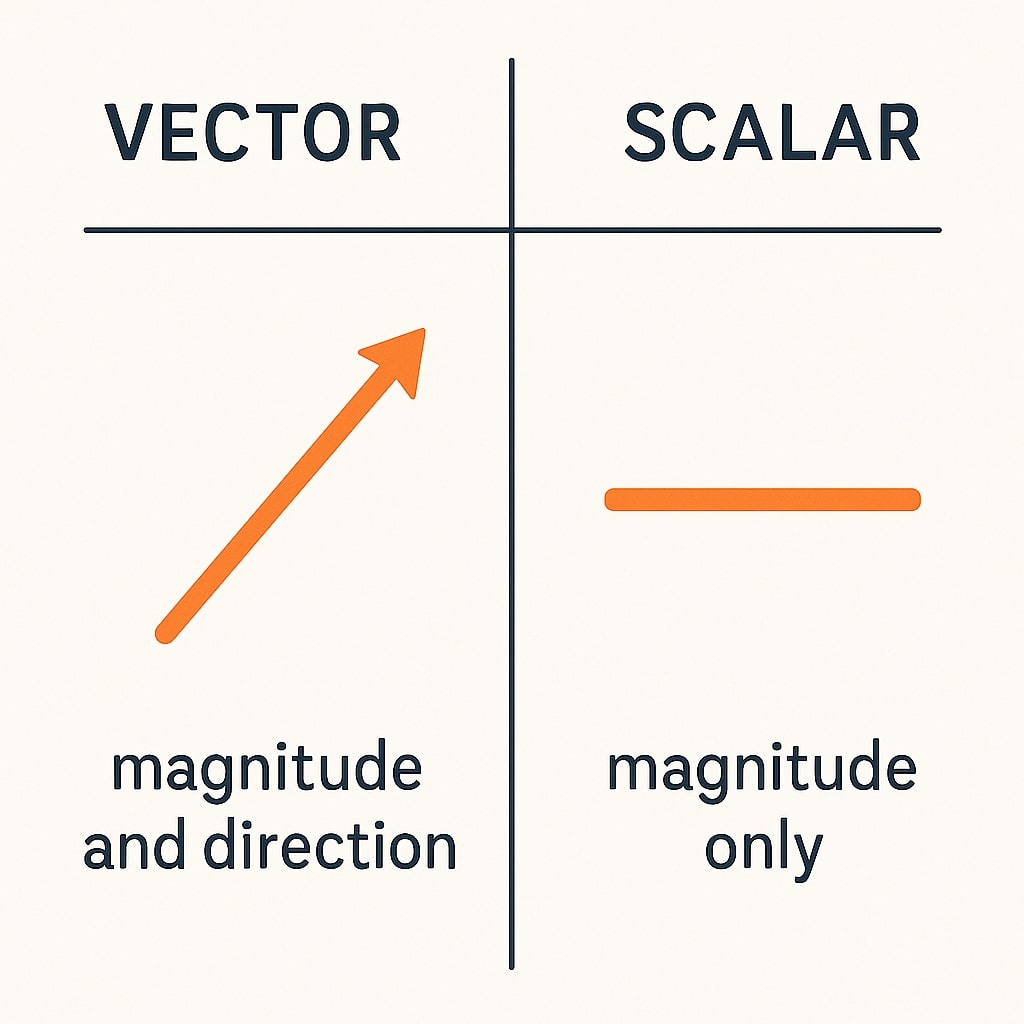Scalars vs Vectors
In physics, we categorize quantities based on whether they include direction. This gives us two types of quantities:
Scalar Quantities
Scalars are quantities that have only magnitude (a numerical value) and no direction.
Vector Quantities
Vectors have both magnitude and direction. They are often represented by arrows, where the length indicates magnitude and the arrow points in the direction.
Visual Example
Consider a person walking 5 meters east. That's a vector quantity. But if you only care about how far they walked, regardless of direction, that's a scalar.

Vector Notation
In physics, vectors can be written in multiple ways:
- Arrow notation: \( \vec{v} \)
- Boldface: v
- Component form: \( \vec{v} = \langle 3, 4 \rangle \)
- Unit vector form: \( \vec{v} = 3\hat{\imath} + 4\hat{\jmath} \) (where \( \hat{\imath} \) is the unit vector in the +x direction, \( \hat{\jmath} \) is the unit vector in the +y direction, and \( \hat{\mathbf{k}} \) is the unit vector in the +z direction)
Vector Operations
Vectors can be added, subtracted, and multiplied by scalars. For example:
- Addition: \( \vec{a} + \vec{b} = \langle a_x + b_x, a_y + b_y \rangle \)
- Subtraction: \( \vec{a} - \vec{b} = \langle a_x - b_x, a_y - b_y \rangle \)
- Scalar multiplication: \( 2\vec{v} = \langle 2v_x, 2v_y \rangle \)
Applications in Physics
Vectors are everywhere in physics. Here are a few examples:
- Displacement: Moving from one point to another
- Velocity: Speed with direction
- Acceleration: Changing velocity over time
- Force (next unit): Combines magnitude and direction to determine motion
Key Takeaways
- Vectors have both magnitude and direction
- They can be represented using arrows, components, or unit vectors
- They're essential in understanding real-world motion and forces